
Use one of the services below to sign in to PBS:
You've just tried to add this video to My List . But first, we need you to sign in to PBS using one of the services below.
You've just tried to add this show to My List . But first, we need you to sign in to PBS using one of the services below.
- Sign in with Google
- Sign in with Facebook
- Sign in with Apple
By creating an account, you acknowledge that PBS may share your information with our member stations and our respective service providers, and that you have read and understand the Privacy Policy and Terms of Use .
Get extended access to 1600+ episodes, binge watch your favorite shows, and stream anytime - online or in the PBS app.
- Become a Member
Already a OPB member?
You may have an unactivated OPB Passport member benefit. Check to see .

You have the maximum of 100 videos in My List.
We can remove the first video in the list to add this one.
You have the maximum of 100 shows in My List.
We can remove the first show in the list to add this one.
Sacred Journeys
Episode 4 | 54m 51s | Video has closed captioning.
One of the five pillars of Islam is that each believer is called, at least once in their lives, to make the Hajj, the annual pilgrimage that starts and ends in the holy city of Mecca located in today's Saudi Arabia. The journey recreates Muhammad's own path as the native son returned to his tribal home as the leader of a vibrant new religion.
Aired: 12/23/14
- Buy on iTunes
- Share this video on Facebook
- Share this video on Twitter
- Embed Code for this video
- Copy a link to this video to your clipboard
Embed Video
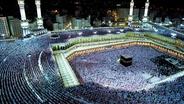
Season 1 Episode 4
Fixed iFrame
Responsive iframe.
Problems Playing Video? Report a Problem | Closed Captioning
Report a Problem
Before you submit an error, please consult our Troubleshooting Guide .
Your report has been successfully submitted. Thank you for helping us improve PBS Video.
- Funding & Distribution
Funding for Sacred Journeys with Bruce Feiler provided by Cancer Treatment Centers of America, Hans and Margret Rey/Curious George Fund, The Pew Charitable Trusts, The Arthur Vining Davis Foundations, the Corporation for Public Broadcasting, and by public television viewers.
Open in new tab
BRUCE FEILER: I'm in the Arabian Desert,
home to one of the great pilgrimages in the world,
where for thousands of years people have come
to answer the call of Abraham
and celebrate the worship of one God.
Coming to Mecca on the Hajj is a duty and privilege
for all Muslims.
WOMAN: I don't want to get distracted
by the crowds.
MAN: I truly was alone
with God in a sea of five million people.
FEILER: For outsiders, rare access
to an arduous and emotional journey.
MAN: It was a test:
Do you trust God more than anything else?
FEILER: But can these American pilgrims
find what they're looking for?
Today, organized religion is more threatened than ever,
yet pilgrimage is more popular than ever.
I'm Bruce Feiler.
In this epic series,
I traveled with American pilgrims
on six historic pilgrimages.
I bathe in the rivers of India,
dance in the heart of Africa,
cleanse in the waters of Lourdes,
trek through the temples of Japan,
and walk in the footsteps of prophets
in Mecca and Jerusalem.
I attend some of the most spectacular and moving
human gatherings on earth.
And I ask, what can these journeys tell us
about the future of faith?
FEILER: Muslims make up almost a quarter of the world's population--
1.5 billion people.
One of the five pillars of Islam
is that each able-bodied believer is called,
at least once in their lives, to make the Hajj,
the annual pilgrimage that starts in the city of Mecca
in today's Saudi Arabia.
The Hajj is the iconic pilgrimage on earth.
Millions of people gather in one place
for five days
and strip themselves of their worldly possessions.
But even as they reconnect to the past,
pilgrims must confront contemporary tensions
over politics, modernization and gender.
For a group of pilgrims around Boston,
the question is, will these modern-day concerns
overshadow their ability to seek redemption from God?
In a few hours, these novice American pilgrims
will leave for the Arabian Peninsula.
First, they need a briefing.
Like many pilgrimages, the Hajj focuses
on asking God's forgiveness for human failings.
Ismail Fenni is a local imam who takes pilgrims every year.
So walk with the crowd until you get to this area
and then you begin your first circuit.
KHUDAIRI: I don't want to get distracted
by the crowds, by the crushing.
Well, hopefully I won't get crushed or trampled on.
The closer you get to the Ka'aba...
FEILER: Tala Khudairi is an executive in higher education.
I want to be able to stay focused
on the intention of why I'm there,
getting closer to God and asking for forgiveness
and being fully in the present moment.
FEILER: Husam Ansari is an ophthalmologist
with a busy local practice.
ANSARI: I don't know that I have felt
a spiritual pull to it.
This is a life milestone that has been engrained in me
as something that I need to do,
something that I have to do.
FEILER: Husam's wife, Amira,
is the Muslim chaplain at Wellesley College.
AMIRA QURAISHI: Our processes in approaching this trip are different.
Husam is planning, he's writing lists.
And for me, just absorbed with thought
and it's kind of wearing me down.
And I'm wondering when I'm going to have the energy
to follow everything he's written on his list.
FEILER: Syed Muhammad Talha is an app designer
who grew up in Saudi Arabia
and moved to the United States as a teenager.
He's just been through a painful divorce.
Part of me wanting to do Hajj
was to have a clear conscience of what had just happened.
What I went through was a big deal
and I just want to ask God for forgiveness
and just help me move on.
Please get on the bus so I can get a head count.
FEILER: The pilgrims have been preparing
for this day for months.
Their friends and family gather to wish them farewell.
Jack Lindsay is a software engineer
from Worcester, Massachusetts,
who converted to Islam in his 20s
and is making his first trip outside the United States.
JACK LINDSAY: I probably made a terrible decision when I was young
to vow I wasn't going to go
out of the country until I went to Hajj.
So I didn't know that it's going to be
28, 29 years later.
If you can think yourself
of something that you really, really want,
but you had to wait 28, 29 years.
Yeah, that's what I'm feeling right now.
FEILER: Pilgrimages, by their very nature,
are about expectations and what happens
when those expectations meet reality on the ground.
I've come to the gateway for many pilgrims,
the seaside city of Jeddah.
It's one of Saudi Arabia's oldest communities,
and sadly, it's the closest I can get to Mecca.
So if I got on the bus, I would be stopped,
they would actually ask me?
They do go through everyone's passports
on the way in.
FEILER: I'm meeting with Anisa Mehdi,
a journalist and filmmaker from New York who's Muslim.
ANISA MEHDI: The area of Mecca and its surroundings,
the area where the Hajj takes place,
are considered sacred precincts.
FEILER: Saudi law allows only Muslims to enter Mecca
and its surroundings.
So Anisa will be my proxy.
A veteran reporter of the Hajj,
she will travel with our pilgrims
and keep in touch via Skype.
It's another example of how technology
is opening once hidden pilgrimages to the world.
So what do you say to someone
when they're about to go on the journey?
Goodbye, God speed?
Tell me what you say.
You say, "May God accept your Hajj."
May God accept your Hajj.
Okay, keep in touch, we'll talk soon.
FEILER: Anisa joins the Boston pilgrims in Medina,
Islam's second holiest city.
It was here that the Prophet Mohammad
set up the first Muslim community
in the early seventh century.
Many pilgrims begin their journey here
to pray and prepare for the upcoming trial
of body and spirit.
(speaking Arabic)
To help me understand what the pilgrims are experiencing,
I'm meeting Imam Johari Abdul-Malik,
an American scholar who's made the Hajj multiple times.
What's the role of Medina?
It's not just visiting Medina,
people go to visit their Prophet.
To be where he was,
to live where he lived,
and to ask for God's mercy.
In many ways, the journey to Medina
has this back story of how Islam got started.
FEILER: Mohammad, born to a prominent tribe
but orphaned as a boy,
became a successful merchant,
traveling a network of trade routes
that brought him into contact with multiple faiths.
AMIRA BENNISON: The Prophet Mohammad grew up in Mecca
and during his early life,
he gained a lot of experience
of the religions around him,
the paganism of his hometown Mecca,
but also Judaism and Christianity.
FEILER: At age 40, while praying in a mountain cave,
Mohammad said he was visited by an angel
who brought revelations from the same monotheistic God
worshiped by Jews and Christians.
Mohammad's newfound beliefs attracted followers,
but also hostility, so he fled to Medina.
Everything the pilgrims do here connects them
with those early, vulnerable days of the faith.
The Quba Mosque is one of the oldest in the world,
its cornerstones said to have been laid
by Mohammad after he settled here in 622.
LINDSAY: To know that the Prophet came here every Saturday
is just amazing.
The feeling of it you can't control,
so we're following in his footsteps
and doing something that he used to do.
FEILER: Five times each day,
in another pillar of the faith,
believers pray, reciting verses from the Koran.
The book's 114 chapters recount miracles and stories
that are said to have been dictated to Mohammad
in a series of revelations that lasted 23 years.
Many of these stories contain prophets
from the Hebrew Bible and New Testament--
Moses, David, Jesus.
But Mohammad said his revelation,
through Allah, or God, was the final one.
LINDSAY: Who knows when something
is going to touch you or not touch you,
when you're going to get the closeness to Allah.
Nothing can describe that feeling,
but nothing can also tell you when it's going to come,
but it came here, so...
FEILER: When Mohammad arrived in Medina
it was a small farming town.
Today it has a population of over one million.
QURAISHI: We see all these shops.
I understand, it's not supposed to be,
you know, pristine like 1,400 years ago.
But it's really hard to stretch my imagination
to see what it was like.
That's kind of the experience that we're hoping to have.
It's a completely different community
than what the Prophet had.
FEILER: In those early years,
the survival of the Muslim community
was still in doubt.
BENNISON: Once Mohammad began to receive revelations from God,
he very quickly alienated a lot of the pagan Meccans,
including his own kinsmen and his own tribe.
Once they're situated in Medina,
they started to engage in hostilities
with their opponents.
FEILER: Like early Jews against their neighbors
or early Christians against theirs,
if early Muslims were going to survive
they had to fight their stronger enemies.
FENNI: The battle happened between this small hill and there.
FEILER: These are the mountain slopes of Uhud
just outside Medina,
where Mohammad's followers fought fiercely
against the tribes of Mecca.
The Muslim forces were shattered in the battle,
Mohammad wounded.
UMAR SALAHUDDIN: Isn't this awesome?
Nabis Assalam and his army were standing right here.
FEILER: Umar Salahuddin is a management consultant
who's one of the Boston group.
What an amazing, amazing feeling it is,
to be standing right here.
I'm like trembling right now.
BENNISON: The Muslims decide that this was a test sent by God
to test their faith
by making them taste adversity
as well as victory.
And it doesn't destroy the community.
SALAHUDDIN: We take our faith for granted.
The spread of this religion did not come easy.
There was a big price that was paid by a lot of people
and we are standing here as a result of that.
It's this feeling
that there's something much bigger out there
and you are just a very, very small part of it.
I feel like walking barefoot here
because maybe the Prophet might have stepped
in one of those places, you know.
It's such an amazing feeling.
FEILER: Mohammad recovered, as did his community.
And over the next seven years,
his forces conquered Mecca and much of Arabia.
By his death in 632,
Islam was the dominant faith in the region.
In the heart of Medina
is the world's second holiest mosque.
Called The Prophet's Mosque,
it's built around Mohammad's tomb
and the site of his Medina home.
A green dome marks the spot
where Mohammad's house once stood.
For pilgrims, a visit here is a way to connect
to the prophet as a man.
The site is open around the clock
to accommodate worshippers.
But for the group from Boston,
who've visited several times,
coming here also raises challenges.
They're the same ones pilgrims of all faiths encounter,
no matter the pilgrimage.
Traveling in congested places,
at odd hours of the day and night,
with unfamiliar food and little sleep, is taxing.
It tests your body, your mind,
even your love of others.
TALHA: My biggest fear is not having enough patience,
because that's the general...
I feel media kind of gives people the impression
that Muslims are always angry.
And this journey that we will take
couldn't be a better test for that.
FEILER: Even at 2:00 a.m.,
crowds swarm in front of Mohammad's house
and the gates that protect his tomb.
TALHA: The space between the place where he gives his sermons
and his house is part of paradise on earth,
and so everyone tries to get a chance to pray in Paradise.
FEILER: Still struggling with what went wrong in his marriage,
Talha begins to feel that coping with these crowds
might make him more accepting.
TALHA: If that actually worked,
where you could actually carry yourself,
you know, patience with you in a suitcase,
and just take it out whenever you needed it...
My dua throughout the Hajj would be like,
"Please, God, don't let me lose it,
don't let me lose it."
FEILER: Female pilgrims face an additional challenge.
Their access to the area in front of Mohammad's home
is restricted to a few hours each day.
I'm losing track of time.
I have no idea what day, what time it is.
That's true.
QURAISHI: That's all we do,
we're going to the mosque, we pray, we go back
and then we come back again a few hours later.
We pray, we go back.
It's just that returning over and over again.
FEILER: For American Muslim women,
used to being treated more equally,
the conduct can be jarring and unnerving.
QURAISHI: It took a lot of concentration.
Women are yelling at you, trying to get you to go.
Telling people to stop their prayer,
just keep on moving.
It was really hard for me to concentrate
while that was happening.
FEILER: As a Muslim chaplain, Amira finds the separation
particularly upsetting because it gets between her
and her reason for being here.
I couldn't see anything from the women's section,
it was all blocked off.
And it has a direct impact on my feeling as a Muslim.
You know, it feels...
Sorry, I don't know, this is weird, this is a weird trip,
it's like I get emotional at random moments.
But I was going to say it just feels
like the Prophet is farther away.
(laughing): Sorry.
I'm...
FEILER: To go on pilgrimage is to enter a heightened place,
where emotions can soar, but sometimes dip.
In the journey, there is risk...
I just want to update everyone about the schedule.
FEILER: ...and readiness.
Tomorrow Anisa and the Boston pilgrims
leave for Mecca.
But first they must get into Ihram,
a word that represents both a pure state of mind
and the simple garments they wear.
LINDSAY: So I'm putting on my Ihram.
What that consists of basically are two pieces of cloth,
one for the bottom
and then one we wear on top, like this.
It's all cotton, it's all plain.
Whether you're rich, poor,
doesn't matter what race, what class.
In front of the eyes of God, you're all the same.
We're not used to wearing clothes like this,
and I think that's the whole point,
is to come out of our comfort zone, for the sake of God.
FEILER: For female pilgrims, Ihram goes beyond clothing.
MEHDI: Women don't have a uniform like men do,
but we'll wear something modest and clean.
We'll take off our makeup, we won't wear nail polish.
We want our external person
to reflect the internal person,
and we go before God as plain and exposed as we are.
LINDSAY: Now it means we're going to Mecca.
It means the reality of Hajj is on.
So it's exciting and a little frightening.
TALHA: Everyone's going to come to Mecca
wearing this white garb, and when we die,
we wear this white garb.
So it's a reminder for us
that this life isn't infinite, it's finite.
FEILER: The preparation over, the pilgrimage begins.
The journey to Mecca recreates Mohammad's own path
as the native son returned to his tribal home
months before his death as the leader
of a vibrant new religion.
Once there, Mohammad taught his followers
the traditions that would become the Hajj.
The trip south from Medina to Mecca
has always been rich with symbolism.
When Mohammad did it, it was a sign of triumph,
that Mecca had been purged of idols,
they were free to worship one God.
At the time it took two weeks by foot.
By camel it would take ten days.
Now there's a highway
and it takes three or four hours by car.
But at the height of the Hajj,
it can take ten, 12, even 18 hours.
And that only heightens the anticipation.
Now is when the journey truly begins.
(horns honking)
IMAM JOHARI: To come into Mecca saying
"Here I come, here I come, oh Lord."
All of them coming, day after day,
like an army of believers.
Walking into the center of a spiritual universe.
FEILER: Mecca is Islam's holiest city.
The population of two million
can double or triple during the pilgrimage.
The heart of the city is the Great Mosque.
Covering almost 100 acres,
its multiple levels and corridors
are said to hold up to a million pilgrims at one time.
At the center is the Ka'aba, which the Koran says
was built by Abraham and Ishmael.
Muslims consider it the House of God on Earth.
On their first night in Mecca,
the Boston pilgrims make the ritual known as Tawaf,
circling the Ka'aba seven times
as instructed by Mohammad.
LINDSAY: When we came here, it was after
a six or seven-hour bus drive
and we were in our Ihram,
so it was tiring.
But when you get your first view of the Ka'aba
it's just beautiful.
ANSARI: It was a lot harder than I thought it would be.
These are large circles.
I think it must have taken us two or three hours
to walk around the Ka'aba seven times.
You know, we were barefoot, and it's marble floor.
It's slow and you're bumping up against people.
QURAISHI: There are some pinch points
where the crowd gets really intense.
If we're just sort of in tune with each other,
it's really fine.
But then there's that person who panics
because they've lost contact
with their partner or something
and they kind of try to get through fast
or try to push their way through.
ANSARI: During the Tawaf, you're supposed to be praying,
you know, like supplicating,
and I think if you're really good at it,
you're doing that constantly.
But I have to admit,
my head wasn't staying in the game.
I was counting the laps,
so I ended up engaging Amira in idle chitchat,
and she said, "You know, we're not supposed
to be chitchatting."
We didn't come here to chitchat.
KHUDAIRI: I didn't know that the mosque
was that big from the outside.
That took my breath away.
That really shocked me.
You feel the oneness and how small you are,
and that you're just a small part of the whole.
FEILER: Part of the power of Tawaf
comes from being surrounded by worshipers
from scores of countries,
but that carries risks, too.
Tala, like many, wears a mask
to protect herself from infection.
KHUDAIRI: Initially, we were on another level.
I tried to stay on the outer edges and safe.
When I saw the Ka'aba,
I was drawn that we had to go there.
We belong there.
FEILER: At the southwest corner of the Ka'aba
is a black stone encased in silver.
SALAHUDDIN: It is our belief that it's a stone from the heavens
and kissing it will put a piece of heaven inside us.
LINDSAY: The hardest is when you want
to actually approach the black stone.
Then it gets very tight.
SALAHUDDIN: There's a sea of millions around you
and we are all pressed against each other.
I have never felt that much energy go through me.
LINDSAY: I can easily see how you can be crushed to death.
SALAHUDDIN: I was squeezed from all directions.
It was tough to breathe.
LINDSAY: At one point, I was off my feet,
I wasn't even touching the ground anymore
because there were just so many people.
I just actually went up into the air.
SALAHUDDIN: We took a much longer time to get there
because we had decided that we were not going to push,
we were going to inch forward.
LINDSAY: With patience, you know, you can get in there
without harming anybody.
And I managed to kiss the black stone today,
so I was extremely happy with that.
SALAHUDDIN: As I got in front of the stone, I don't know what happened,
but the world stopped for a second
and there was stillness,
and I felt no pushing, no shoving
and I was able to go in and kiss the stone.
And then I thought about it for a second.
There was no pressure again so I kissed it again.
I truly was alone with God
in a sea of five million people.
FEILER: Anisa and the pilgrims will remain in Mecca
for several days
before the most important Hajj rituals begin.
Hi, Anisa, how's it going?
How are you doing?
We are exhausted.
There's nobody sleeping here at all.
It's going on midnight
and they're planning to gather together at the Ka'aba
for the second night in a row at 2:00
and stay all the way through until 6:00 in the morning.
What is the biggest change you are detecting
among the pilgrims that you're with?
They are bonding.
They came together, mostly as strangers,
and there is that sense also
of becoming part of a whole that's greater than yourself.
Let me ask you about this women issue.
Have any of them
been startled by the way they've been treated?
MEHDI: I think everybody comes prepared
to a certain degree.
What's interesting is that men and women
are circling the Ka'aba together.
Men and women, when it's time to stop and pray,
are praying next to one another.
However, when you're not in the worship part
and people's cultural mores and norms come out,
sometimes there are cultural clashes.
FEILER: Beyond contemporary politics,
the story behind the Hajj celebrates women.
Abraham, known in the Koran
as a "friend of God," is married to Sarah,
who can't have a child.
So she offers him her handmaiden, Hagar,
who gives birth to Ishmael.
Sarah then gives birth to Isaac.
Now there are two sons.
Tradition says God instructs Abraham
to take Hagar and Ishmael to Mecca
and leave them in the desert.
Hagar has faith.
"“God will not allow us to be lost,"” she says.
Abraham, back in Palestine,
is said to turn and pray toward Mecca.
Hagar, fearing for her son,
dashes back and forth between two hills,
desperately searching for water.
In the second big act of the Hajj,
the pilgrims will recreate that journey,
hurrying between two hills.
Hagar and her son are saved
when a miraculous spring bubbles up.
Today, pilgrims drink
from the purported source of that spring
now inside the Great Mosque.
The water is called "zamzam,"
from the word "stop" Hagar utters to contain it.
QURAISHI: It's so gratifying and exciting to me
that one of the main pillars of Islam
is literally following in the footsteps of a woman.
She and her son discovered
the miracle of the Zamzam water
and that is a symbol of God's mercy for us.
FEILER: The Great Mosque contains an enormous covered walkway
stretching between two hills linked to Hagar.
Pilgrims reenact the frantic search for water,
moving back and forth seven times,
for a total of nearly two miles.
QURAISHI: You're feeling the pounding of your feet,
you're feeling tired
and you're thinking about that moment in time
when she was running back and forth.
And as a mother, all you really care about
is your child.
So it's a really gratifying part of Islam for me.
We're really walking and it's air conditioned
and it's not exactly the same thing.
Not even close,
but it's symbolic.
FEILER: In recent years,
modernization has transformed Islam's holiest city.
Cranes and bulldozers push back
the storied mountains of Mecca
to make way for malls, hotels,
and one of the tallest buildings in the world.
All to accommodate the growing number of pilgrims,
three million or more a year.
They've made the mosque bigger and bigger.
And bigger.
And bigger and bigger.
That allows more people,
but some people I hear are frustrated
that they're not closer to the Ka'aba.
JOHARI: The Ka'aba has been destroyed by floods
and rebuilt over and over again.
There are people who desire to touch it
as if they are touching the original stones.
This is not the intent.
It is a house for Allah,
but the building itself
should not become an object of worship.
FEILER: After the early rituals, there's a break
before the pilgrimage gets even more intense.
For pilgrims, it's a reminder that for all their sanctity,
sacred journeys are often enormous street fairs,
a mass family reunion.
Everybody has been so nice, smiling.
QURAISHI: Definitely a nice break from the norm.
It's nice to just be here.
I think we've been having a good time.
For the most part,
we've been able to shut off from our usual life,
for the most part.
I haven't completely shut off,
like I still check my email.
ANSARI: I'm a little bit of a workaholic,
but it's definitely been significant detachment for me,
and it's been very nice.
AMIRA: Even though we're, like, all we're doing
is sleeping, eating and praying,
it feels really busy.
Do they know that it's prayer time?
I didn't hear the adhan.
(man chanting over loudspeaker)
FEILER: The call to afternoon prayer rings out
across the holy city.
(chanting continues)
JOHARI: The injunction of the Koran is to pray five times a day.
People will stop their work.
In Mecca, traffic will stop, shops will close.
FEILER: The five daily prayers encourage Muslims
to break with their routines and surrender to God.
The word "“Muslim"” means "“one who submits to God.
LINDSAY: Today after we prayed, I honestly felt
that if I died right this second,
I don't care.
That's the kind of level I would like to reach
and hopefully, inshallah, maintain,
but it faded very quickly.
FEILER: Early stages of many pilgrimages feel this way.
The pilgrims glimpse what they're after,
but then the glimpse disappears.
There's a reason sacred journeys
go on many days.
The seekers must keep seeking.
Soon the Boston pilgrims will get back into Ihram
and get back on the road.
And it's like this uniform that everybody wears
and so there's no real distinction.
The only thing that makes you distinctive
in the eyes of God is what is in your heart.
FEILER: Until now, pilgrims have been traveling alone
or in small groups.
But starting today,
every pilgrim here for the Hajj will move as one.
It's the eighth day of Dhul-Hijjah,
the month of Hajj in the Muslim calendar.
Dressed in Ihram, millions leave Mecca
on a route laid out by Mohammad
to honor the trials of Abraham.
I always thought the pilgrimage
was coming to Mecca, but it's not.
It's actually leaving here and going someplace else.
This is a journey
that is following in the footsteps
of Abraham and his family,
but done in the way of the Prophet Mohammad.
FEILER: 15,000 buses carry pilgrims from Mecca
to the Valley of Mina, five miles away.
Worshipers will spend the day in prayer and contemplation
before moving on to stand alone before God
on the plain of Arafat.
It's a stage familiar to many journeys:
the cleansing.
JOHARI: You have now set yourself
away from the city, and you stay there for a day.
That day is spent in supplication and prayer
and anticipation.
What should I be doing tomorrow
when I have those few hours on Arafat?
What should I be thinking about?
How should I be preparing?
FEILER: With Anisa and the pilgrims
settled in the encampment at Mina,
an opportunity to check in.
Tell me about the accumulated fatigue
and how that's affecting everyone on the trip.
MEHDI: These people haven't slept
more than two or three hours a night
for almost ten days,
so their bodies are aching and their feet hurt
and they're giving each other back rubs,
giving each other whatever medications,
and Band-Aids for blisters.
Does it somehow enhance the experience
that you're all so tired?
MEHDI: I think it enhances
your ability to surmount trial.
FEILER: And there are trials.
For Jack, a black eye he got at the Ka'aba
the night before coming to Mina.
LINDSAY: The place was just jam-packed
and we were right against the Ka'aba,
about five feet from the black stone,
and we're making our plan
to slowly make our way over.
All I saw was an elbow coming
and I had no way to defend myself
so just right in the head, I got the elbow.
A little bit later I found
that I had this badge of courage.
FEILER: Amira too has an injury that will impact
the rest of her journey.
I just twisted my knee in the middle of the night,
so I have to finish the Hajj likely in a wheelchair.
If I try to walk on it, it will slow everybody down
and I'll be in a lot of pain.
I'm disappointed.
One of the hardest things
is really to let people help me.
I don't think I've ever been in this position before.
Everyone's behind you.
QURAISHI: We're supposed to look for signs
of God around us, and in us,
so every time somebody comes to help me,
show compassion for me, that's Allah's presence.
If I am a true believer,
I have to show gratitude for that.
Ready to go.
Everybody is here for a spiritual experience,
and whatever happens is always welcomed.
We have setbacks,
we have hurdles that we have to cross,
and it's really our will to cross those bridges
and those hurdles.
FEILER: After a day and night at Mina,
the pilgrims move on to the next stage,
traveling nine miles to the Plain of Arafat.
All pilgrims make the same journey on the same day.
The visit to Arafat
is the single most important event of the Hajj.
FENNI: Hajj is Arafat.
You cannot have Hajj without being in Arafat.
During that day, the Divine descends
to the lower heavens with the angels,
because he knows that these, our servants,
have come to ask for His forgiveness.
When you know that you've done
everything in your power,
everything that you know to do
to get accepted that day,
perhaps you will get accepted.
There is nothing on Arafat but desert,
and a hope that you might get
this acceptance from God for your journey.
FEILER: It was here, perched above the Plain of Arafat
on the Mount of Mercy,
where Mohammad gave his farewell sermon
just months before he died.
The sermon captured the essence of his beliefs.
Mohammad's sermon on the Mount of Mercy
contains deep parallels
with Moses's farewell sermon on Mount Nebo
and Jesus's Sermon on the Mount.
All three contain a call to unity,
a plea for compassion
and an implicit warning not to lose these values
in the future.
But they also have something else in common.
All three take place in the middle of nowhere,
as if to say, no one person, no one place,
has ownership over these ideas.
They belong to everyone.
There's another tent city at Arafat,
created for just this one day each year.
Pilgrims can remain outside or spend the day under cover.
The only focus is on the sincerity of their prayers.
SALAHUDDIN: We are all here individually to connect individually with God,
and we each have our own prayers
and our own way of connecting,
yet we all have a larger common purpose,
to connect with God, to pray to God
and to be forgiven by God.
I'll be praying for myself,
for this world and the hereafter,
as well as for my family,
my friends, my relatives, colleagues and for mankind.
KHUDAIRI: What I've been learning about during intense times,
is that it's not me having to rely on me and my will
and my own strength.
But I need to surrender sooner.
FEILER: No matter the pilgrimage,
no matter the traveler, the road itself has power.
Often, what it offers is relief.
TALHA: I go through stuff that's happened in my head
while I'm making prayers and talking to God
about those things.
I hope God gives us
a clean slate after this and start all over again.
We'll see where life takes me, I guess.
Am I looking for someone...
If God wants me to find someone, I guess, you know.
FEILER: Strengthened and purified by their day at Arafat,
the pilgrims are ready
for one of the more colorful events of the Hajj.
They'll spend the night in the Valley of Muzdalifah
before reenacting Abraham's dramatic showdown with Satan.
In a barren strip of desert like this,
Abraham faces his greatest test.
In a dream, the Koran says,
Abraham sees himself sacrificing his son,
believing it's a message from God.
The devil tempts him to disobey, the commentators added.
But Abraham defies the devil
and declares his loyalty to God.
Judaism and Christianity also commemorate
Abraham's willingness to sacrifice a son.
But Islam teaches that Abraham gathers stones
and throws them at the devil in defiance.
Pilgrims do the same.
JOHARI: I am now arming myself
for the challenge that is coming,
that I will meet Satan,
and he will tempt me
as he tempted our father, Abraham.
FEILER: Here is the immediacy of being on the road.
You don't just read the story, or tell it, or sing it.
You act it.
You become it.
You enter the story, gathering ammunition
to throw at whatever it is that's tempting you.
It is a physical embodiment of something
that you're constantly struggling with yourself.
When we go back to our homes,
leaving this holy place,
are we now going to stone, if you will, those urges
that really are not abiding by the will of Allah,
and that's really what the significance is.
FEILER: At a time when Hajj authorities
are believed to bring in tons of stones each year
to restock the supply,
not everyone disappears into the story.
Fatigue itself is a temptation.
ANSARI: I'm really tired, I'm exhausted,
and I'm physically uncomfortable.
This is getting to me,
and I really want to shower
and put on some normal clothes.
I haven't necessarily been washed over
by any tremendous feelings.
It's hard to feel that way.
This is a very industrial and rough environment.
There's no stars, there's no beautiful night sky.
It's not really that peaceful,
and others may say it is and that's fine,
but I don't feel that way.
It is what it is, you know.
People say I'm cleansed,
I did the work, I'll take the certificate.
FEILER: More surprising is that a story that invokes child sacrifice
continues to resonate at all.
You would think that this story is so barbaric
that it would have died out over time.
What is it about this story?
I don't want anybody
to get the idea that this is about a homicide,
that God came in and stopped it.
The moral of the story
is that God already knew when he asked Abraham
that He was going to step in.
TALHA: It was a test.
It was a test of do you trust God more than anything else?
And he was willing to do that, no questions asked.
And, you know, we're just doing this
to represent that, that sacrifice.
And sacrifice, without question,
is something that in this day and age
we don't really get ourselves involved in.
FEILER: With Amira still in her wheelchair,
Husam is beginning to see the Hajj
through a more open lens.
ANSARI: I don't have this big wow, aha moment
of spiritual revelation, so to speak,
but I mean the amount of love and support
we're feeling from everybody in the group
just after Amira injured herself is tremendous.
You know, that affects me.
I get emotional at times like that,
because it's at a moment like that
that I actually thank God
for that person or that moment,
so that is my connection.
Or like this gentleman who just helped me collect my stones.
You know, if I wasn't feeling quite so gross,
I would have hugged him, you know.
FEILER: It's early morning of the third day
since leaving Mecca.
The pilgrims move on
to the penultimate stage of the Hajj,
returning to Mina carrying their pebbles to stone the devil,
which they'll do again and again.
Another vast, multilevel building stands
where Abraham is said to have confronted the devil.
At the center of the building,
three massive stone pillars-- today they're more like walls--
that symbolize Satan.
JOHARI: It is symbolic, but it's also real,
because you are in that place.
You're surrounded by stone.
It's desolate,
and that's where God is with you,
and the Satan that you can't see,
but he's always around,
inviting you against your best interests.
FEILER: Once again the pilgrims reenact the past,
a reminder that everyone faces temptations every day.
SALAHUDDIN: It's a way to say, "I have control over Satan.
"I can actually push Satan away
and I can actually take charge of the situation."
FEILER: The size and shape of the pillars
have changed radically over time.
The current structure was built in 2006
to protect pilgrims from being crushed and trampled,
as happened frequently in the past.
The evolution of this pillar
is quite visually interesting.
So originally, we have a kind of small...
Like an obelisk.
Yes, exactly.
Then it evolves
and then you've got... it's a little taller,
to today where you've got this whole wall.
The importance is not what is the shape of the pillar.
It is "I am in the place of Abraham,
and I am doing what Abraham did."
And, by the way, I like the way
they changed the structure because the obelisk,
if you were on the opposite side
and somebody missed a pillar,
then you'd get hit with a pebble.
FEILER: Before the current building,
the stoning was the most dangerous stage of the Hajj,
and stories of pilgrims being killed overshadowed the event.
SAUD KATEB: Lots of people died here.
Even if you are strong, if you are young,
once you just fall down, all of this crowd,
you'll not be able to stand up again.
Now look-- it's completely different.
FEILER: The Hajj, like many pilgrimages, is a story of layers.
There is the modern world,
with its marvels of metal, glass and electronics.
There's the world of Mohammad,
with its devotion and rivalries.
There's the world of Abraham, with its family dramas
and battles between God and devil.
It's the duty of the pilgrim to navigate these worlds
and reach a place that's both new and everlasting.
Today is Eid Al-Adha, the festival of sacrifice,
when Muslims worldwide celebrate
the saving of Abraham's son,
often by sacrificing an animal.
These days, pilgrims pay for a sacrifice
to be done in their name, the meat given to the poor.
Pilgrims change out of Ihram,
some men shave their heads;
and all return to the pillars to complete the stoning.
JOHARI: You perform the pilgrimage to Mecca,
you give up your familiar, you give up your lifestyle,
your diet, your clothing, lipstick,
you give up ththings that are part of you.
Seven pebbles,
seven circuits around the Ka'aba,
seven days in the week, seven heavens,
there's something about that seven,
and there's something about repetition for people.
Once it becomes habit forming
then, maybe, when you go back,
you'll be able to practice.
People get worked up because the fervor,
the feeling is there that,
"I'm letting some of my baggage go.
"Satan, you broke up my family.
"Satan, you caused me to lose my job.
Satan, my child..."
We're in a group therapy, and we're all getting it out.
QURAISHI: The throwing of the rocks, I almost didn't go
because I really did not think of it
as anything significant, almost even silly.
But I went, and the first one I was throwing rocks
as if I was throwing them at my own flaws,
and the second one, I found myself asking for strength
to overcome those.
And then the last one, I found myself feeling so alive,
so happy, that God is stronger than any of those stupid things
that we give in to.
So it was really enlivening for me.
FEILER (on Skype): The pilgrims that you're with,
if you had to guess, what's the one thing
they're taking home?
They're taking home
that their life is in God's hands,
but still do the best you can.
It doesn't mean sit back and wait.
Sometimes the hurdles along the way
are what make the journey valuable.
What do you get by going on a journey like this
that you don't get by staying home?
You have to leave home
to see what is out there in the world.
And in many of the countries from which these people come,
there are wars going on.
And yet here you see people who are working together
to generate a community that crosses all kinds of boundaries.
FEILER: That sense of community is certainly on display
as the pilgrims return to Mecca,
streaming together toward the Great Mosque for the final act,
a farewell walk around the house of God.
LINDSAY: You see the condition of so many people
and how much more they went through than us.
I'm amazed at how strong they are,
and you know I'm amazed at how so many ople came together.
I've never seen anything like that.
You would think with that many people,
there'd be serious problems with the lack of amenities
and food at the end, water, resources,
it would be a lot harder.
But people got through it all.
It's amazing.
SALAHUDDIN: To me, the Hajj will start
when we land at JFK.
That's when the real Hajj will start, right?
Because that is what you are taking back.
JOHARI: Many people come back with a kind of freedom.
If you can imagine having weights on your hand
and you're learning how to box.
And then they say,
"Okay, now it's time to put the gloves on
and take the weights off,"
and then you fly like a butterfly.
There's another step in your stride.
TALHA: I think I've moved on, maybe.
But it's still too early to call.
I inquired about someone yesterday.
It didn't work out, but I took that first step
and I was like, maybe I am ready to move on, you know.
Maybe I have found the peace in myself
to leave the past behind as is.
ANSARI: I didn't like the fact that Amira got injured.
There was a lot of pain and frustration,
but we did see some amazg blessings out of it too.
I do feel more connected with God and my Creator
and I feel more resolved
to be more observant in my practice.
FEILER: The journey ends where it began,
with a simple walk, seven circles.
Only now, few look backwards.
Instead they look forward.
QURAISHI: I feel so happy.
This is so great, so great.
You know, if we just tap into that source,
the loving, the kind, the generous God,
we as humanity can overcome
all of the horrible things that we do.
JOHARI: Allah created human beings in the best mold,
and when you see them on Hajj,
they are, with all of their difficulties,
on their best human behavior.
If human beings, year after year,
decade after decade, millennia after millennia,
can do that,
then it means there is hope for humanity.
FEILER: And perhaps that hope
is the true destination of the Hajj,
along with the realization that it can only be achieved
with the cooperation of others.
It's the ultimate lesson of the sacred journey.
The road is tough.
You can't survive alone.
The only way to get through is to open yourself up
to the suffering and the support of those around you
and maybe that's the point all along.
FEILER: I'm at the Ganges River
at the largest gathering of humanity on the planet.
Every 12 years, tens of millions of people
gather over 50 days to bathe in these waters.
This year, among the hundred million
expected at Kumbh Mela are American pilgrims
on a journey of discovery.
Can they draw closer to their god?
WOMAN: My aim
is to understand God.
FEILER: The Kumbh Mela, next time
on Sacred Journeys with Bruce Feiler.
Find more information and exclusive video
on Sacred Journeys with Bruce Feiler
at pbs.org/sacredjourneys.
Sacred Journeys with Bruce Feiler
is available on Blu-Ray and DVD.
To order, visit shoppbs.org
or call 1-800-PLAY-PBS.
Extras From This Episode
More episodes.

Pilgrim Profiles
Meet the Pilgrims
Meet pilgrims from the Hajj, Shikoku, Jerusalem, Lourdes, Kumbh Mela, and Osun-Osogbo pilgrimages.
More Culture Shows

SACRED JOURNEYS WITH BRUCE FEILER: The Hajj

Airs Tuesday, December 23, 2014 at 9 p.m. on KPBS TV
Join host Bruce Feiler on an unprecedented journey to the world’s most meaningful landscapes and rigorous religious pilgrimages . Feiler and contemporary sojourners journey to sacred sites cherished by billions and visited annually by hundreds of millions of pilgrims. Each episode follows a modern-day pilgrim on a private spiritual journey. The six-part series, SACRED JOURNEYS WITH BRUCE FEILER , presents a comprehensive picture of the practice of pilgrimage in its varied expressions around the globe, over thousands of years. KPBS will broadcast two consecutive episodes on Tuesdays, December 16, 23 and 30 beginning at 8 p.m. each night: "Lourdes" (Dec. 16), "Shikoku" (Dec. 16), "Jerusalem" (Dec. 23), "The Hajj" (Dec. 23), "Kumbh Mela" (Dec. 30) and "Osun-Osogbo" (Dec. 30).
What is a Pilgrimage?
Read about the six stages that characterize every pilgrimage.
Meet the Pilgrims
Explore pilgrim profiles featured in the series SACRED JOURNEYS WITH BRUCE FEILER.
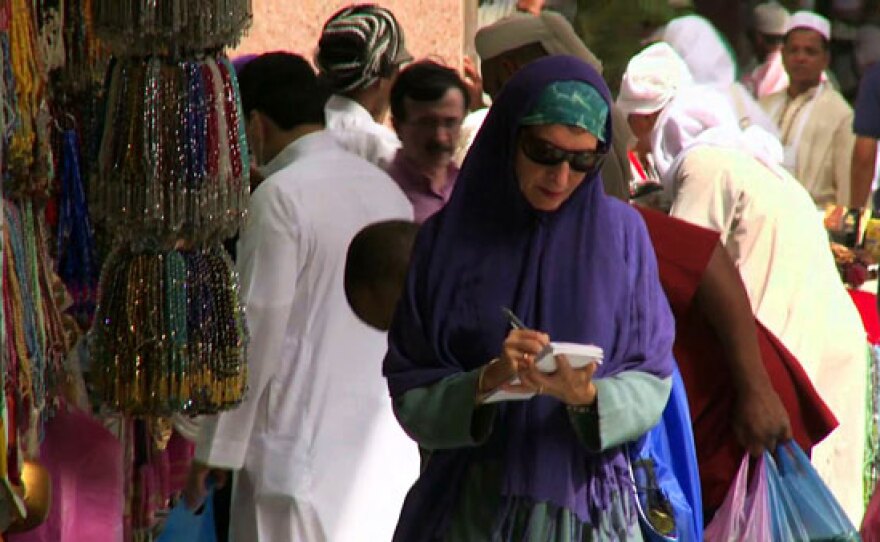
"The Hajj" airs Tuesday, December 23 at 9 p.m. - “The Hajj is the iconic pilgrimage on Earth,” says host Bruce Feiler, as millions of pilgrims gather in the valleys outside the city of Mecca in today’s Saudi Arabia to take part in the annual five-day pilgrimage every Muslim hopes to complete at least once. Since non-Muslims aren’t permitted in Mecca, Bruce’s surrogate is Anisa Mehdi , a veteran reporter of the Hajj, with whom Bruce will Skype at regular intervals. Anisa joins a group of Muslim pilgrims from Boston who begin their journey in Medina , the second of Islam’s holy cities.
As the pilgrims visit sites in Medina associated with the life of the Prophet Muhammad , Bruce enlists the help of a historian and an eminent American Muslim scholar to explore the origins of the religion and its iconic pilgrimage. In 622CE Muhammad fled his birthplace of Mecca after persecution by its pagan rulers who objected to him preaching a new monotheism. Muhammad and a small group of followers settled in Medina. Within ten years Islam was the dominant religion of Arabia and Muhammad returned to Mecca in triumph to clear idols from the holy sites and teach his followers the different stages of the Hajj pilgrimage.
The Boston pilgrims follow Muhammad’s path from Medina to Mecca, beginning their Hajj by circling the Ka’aba , the ancient shrine at the center of Mecca’s Great Mosque. Muslims believe the Ka’aba was first built by Abraham, patriarch of Islam, Judaism and Christianity.
Stripping themselves of worldly possessions for the duration of the Hajj, the pilgrims enact the rituals laid out by Muhammad, experiencing exhaustion, injury and elation as they seek forgiveness and inner peace. They leave with a new sense of connection to humanity, and to the one-and-a-half billion people that make up the worldwide community of Muslims.
Bruce Feiler is on Facebook , and you can follow @BruceFeiler on Twitter. Episodes from this series will be available for online viewing through mid-January 2015.
Filter by Genres
- Arts & Culture
- Current Affairs
- Factual Series
- Foreign Language
- Human Interest
- Natural History
- Social Issues
Filter By Popular Keywords
- Natural Disasters
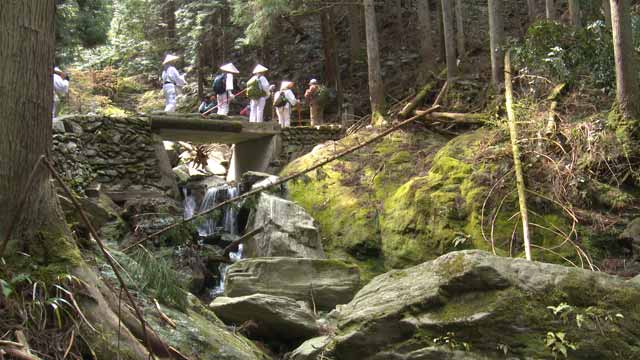
Sacred Journeys 6x60
Sacred journeys are as old as humanity, yet they’re more popular today than ever before. Tens of millions go on a pilgrimage each year. In this landmark series, New York Times best-selling author Bruce Feiler travels with American pilgrims on six historic pilgrimages. They set out from the ordinary and seek the extraordinary.
– In Lourdes, France, bathe in sacred waters with wounded soldiers from around the world in a moving search for healing and reconciliation.
– In southern Japan, trek with Buddhist pilgrims on an 800-mile, 88-temple journey as they seek personal salvation and renewal.
– In Jerusalem, follow the trail of pilgrims from the three Abrahamic traditions as they ground their faith in one of the holiest cities on Earth.
– In Mecca, go behind closed doors of the Hajj in a rare, intimate look at pilgrims making the trip of a lifetime.
– In India, plunge into the Ganges during the largest human gathering on earth, the Kumbh Mela, which takes place every 12 years.
– And in Nigeria, dance at water’s edge with African-Americans at a spectacular Yoruba festival where they reclaim their religious roots.
Unprecedented in scope, Sacred Journeys with Bruce Feiler will forever change how you view your own spiritual journey.
- Download Fact Sheet
Related Videos
Finding your roots, season 10, baby animals: the top 10, season two, israel’s second front.
Sacred Journeys
Osun-osogbo.
The festival of Osun-Osgobo, which takes place every year in Osogbo, Nigeria, celebrates the Yoruba goddess of fertility, Osun. The festival renews the contract between humans and the divine: Osun offers grace to the community; in return, it vows to honor her Sacred Grove.
S1 E6 - 54m 21s
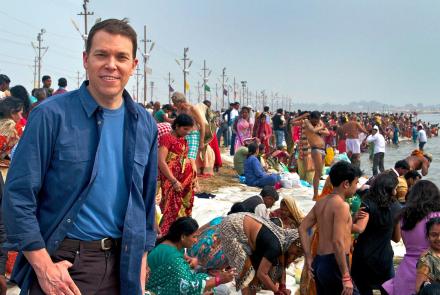
S1 E5 - 54m 51s
Every twelve years, tens of millions of men, women and children gather on the flood plain of the Ganges and Yamuna Rivers in Allahabad, India, for the Kumbh Mela, the largest gathering of humanity for religious purposes on the planet. Pilgrims come from across India and around the world to bathe in the water where the two sacred rivers meet.
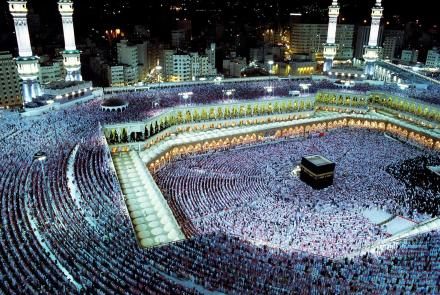
S1 E4 - 54m 51s
One of the five pillars of Islam is that each believer is called, at least once in their lives, to make the Hajj, the annual pilgrimage that starts and ends in the holy city of Mecca located in today's Saudi Arabia. The journey recreates Muhammad's own path as the native son returned to his tribal home as the leader of a vibrant new religion.
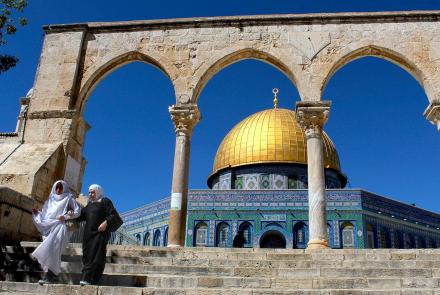
S1 E3 - 54m 51s
The Hebrew Bible instructs all Jews to make a pilgrimage to Jerusalem three times a year. But the city is holy to more than just Jews: Christian pilgrims began coming to Jerusalem and the Holy Land within centuries of Jesus' death, and the Al Aksa Mosque, located inside the walls of the Old City, is considered the third holiest site in Islam after Mecca and Medina.
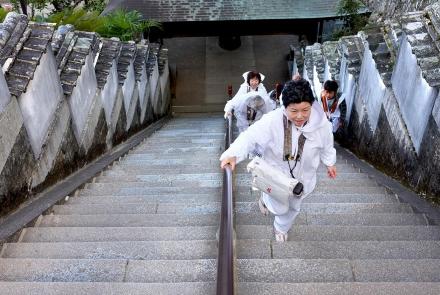
S1 E2 - 54m 51s
The Japanese island of Shikoku is the birthplace of the most revered figure in Japanese Buddhism, the monk and teacher Kobo-Daishi. For hundreds of years, a 750-mile pilgrimage route has circled this mountainous island, connecting 88 separate temples and shrines that claim connection to Daishi, also known as the Great Master.
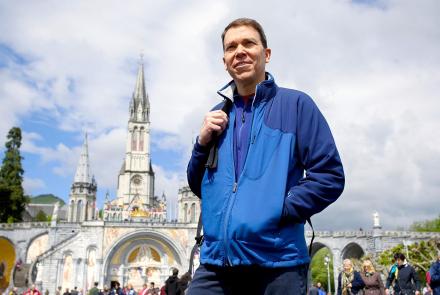
S1 E1 - 54m 50s
Lourdes has become one of the holiest Catholic pilgrimage sites in the world, visited annually by more than five million people who come in search of healing from its sacred waters. Since the end of World War II, soldiers from around the world have journeyed to Lourdes seeking healing and unity with one another at a week-long gathering known as the International Military Pilgrimage.
Extras + Features
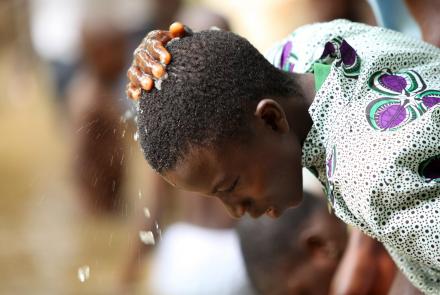
Osun-Osogbo (Preview)
S1 E6 - 1m 33s
Venture deep into the sacred forest outside the city of Osogbo to celebrate the goddess Osun. This episode of Sacred Journeys with Bruce Feiler premieres December 30 at 9/8C on PBS (check local listings). See more from Osun-Osogbo at http://pbs.org/sacredjourneys
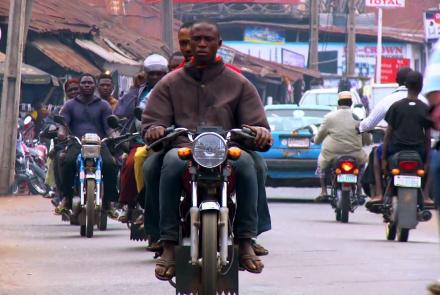
Notes from the Field: Arriving in Osogbo (Osun-Osogbo)
S1 E6 - 2m 43s
As a visitor, what can you do to find your way around without a GPS? The citizens of Osogbo have found a creative solution to this challenge!
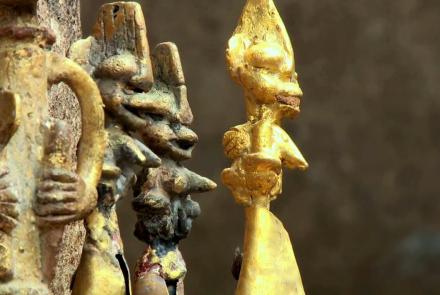
Notes from the Field: Osun's Sacred Bells (Osun-Osogbo)
S1 E6 - 3m 39s
The ancient craft of bronze-making is alive at Osun-Osogbo. Watch a craftsman mold these handmade brass bells for the festival of Osun.
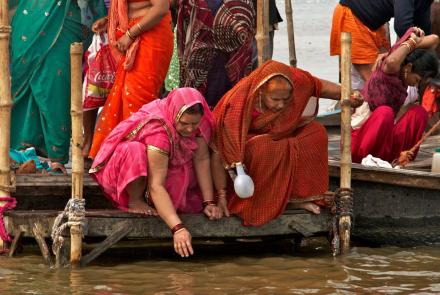
Kumbh Mela (Preview)
S1 E5 - 1m 36s
Bathe in the sacred river Ganga alongside 100 million Hindus. This episode of Sacred Journeys with Bruce Feiler premieres December 30 at 8/7C on PBS (check local listings). See more from the Kumbh Mela at http://pbs.org/sacredjourneys
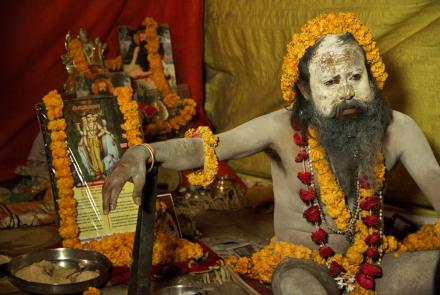
Notes from the Field: The Naked Holy Men (Kumbh Mela)
S1 E5 - 3m 33s
One of the most well-known symbols of the Kumbh Mela is the naked men known as Naga Sadhus. Why are they naked, and what happens when host Bruce Feiler joins a Naga Sadhus in his tent? Find out!
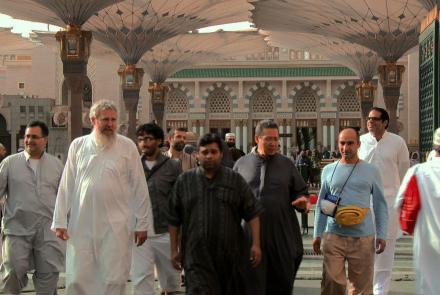
The Birthplace of Islam (The Hajj)
S1 E4 - 5m 25s
Examine the origins of Islam as modern Americans explore its birthplace in Medina, Saudi Arabia in this video resource from PBS LearningMedia.
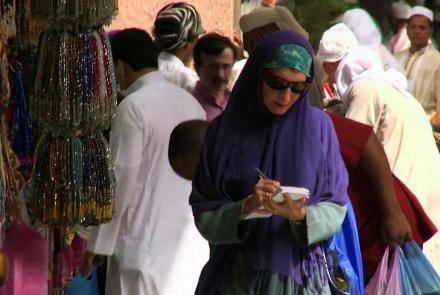
Notes from the Field: Anisa's Story (The Hajj)
S1 E4 - 3m 19s
Enter a place where only Muslims are allowed with journalist and filmmaker Anisa Mehdi.
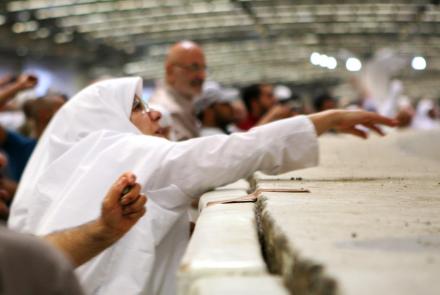
The Hajj (Preview)
S1 E4 - 1m 35s
Travel in the footsteps of the prophet Muhammad to the annual gathering of Muslims in Mecca. This episode of Sacred Journeys with Bruce Feiler premieres December 23 at 9/8C on PBS (check local listings). See more from the Hajj at http://pbs.org/sacredjourneys
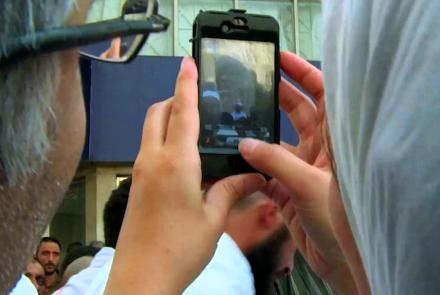
Notes from the Field: Citizen Journalists (The Hajj)
S1 E4 - 2m 45s
How is technology and social media affecting the pilgrimage to Mecca? Find out!
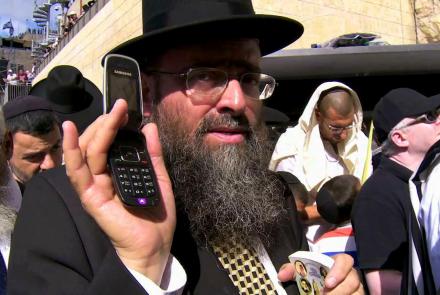

Notes from the Field: Tech at The Western Wall (Jerusalem)
S1 E3 - 2m 36s
Can’t make the bi-annual blessing at the Wailing Wall in Jerusalem? Modern technology allows you to feel like you’re practically there.
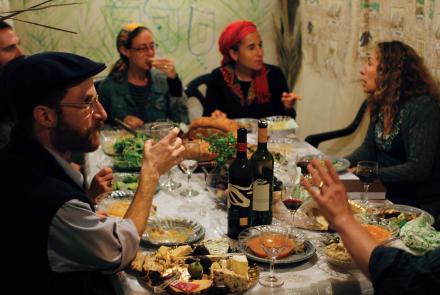
Jerusalem (Preview)
S1 E3 - 1m 35s
Celebrate the Jewish festival of Sukkot in Jerusalem and walk in the footsteps of Jesus from Nazareth to Capernaum. This episode of Sacred Journeys with Bruce Feiler premieres December 23 at 8/7C on PBS (check local listings). See more from Jerusalem at http://pbs.org/sacredjourneys
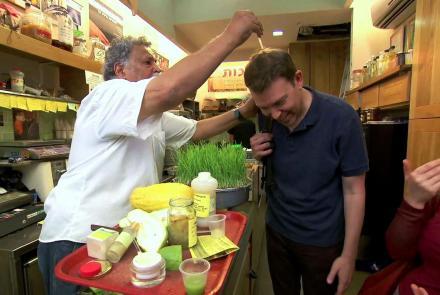
Notes from the Field: The Etrog Man (Jerusalem)
S1 E3 - 3m 28s
The etrog, one of the three symbols of the Jewish holiday of Sukkot, has many surprising beauty and medicinal uses.
WETA Passport
Stream tens of thousands of hours of your PBS and local favorites with WETA Passport whenever and wherever you want. Catch up on a single episode or binge-watch full seasons before they air on TV.
- Get WETA Passport
Similar Shows
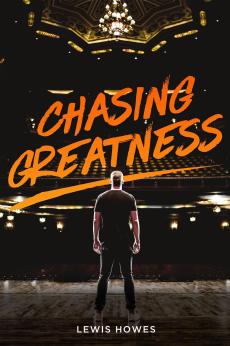
Chasing Greatness
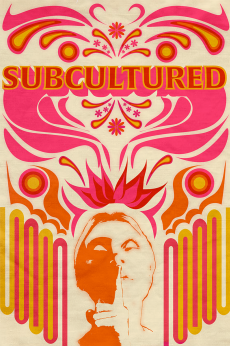
Subcultured
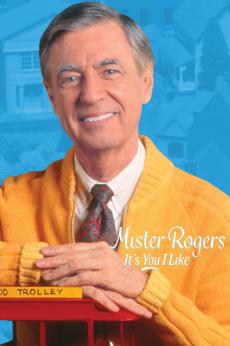
Mister Rogers: It’s You I Like

Civilizations
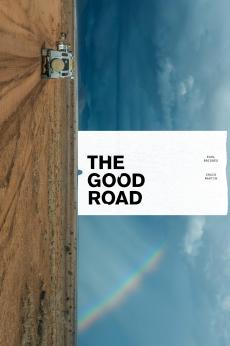
The Good Road
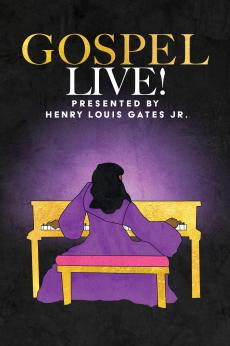
GOSPEL Live! Presented by Henry Louis Gates, Jr.
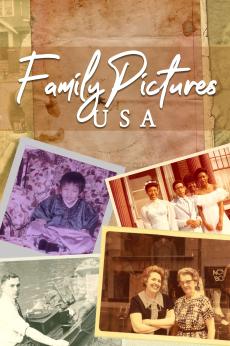
Family Pictures USA

College Behind Bars
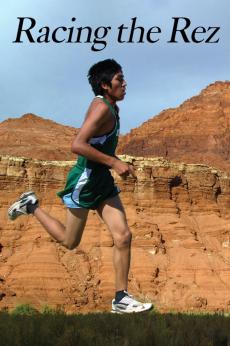
Racing the Rez
Get the latest from weta.
The PBS Hawaiʻi Livestream is now available!
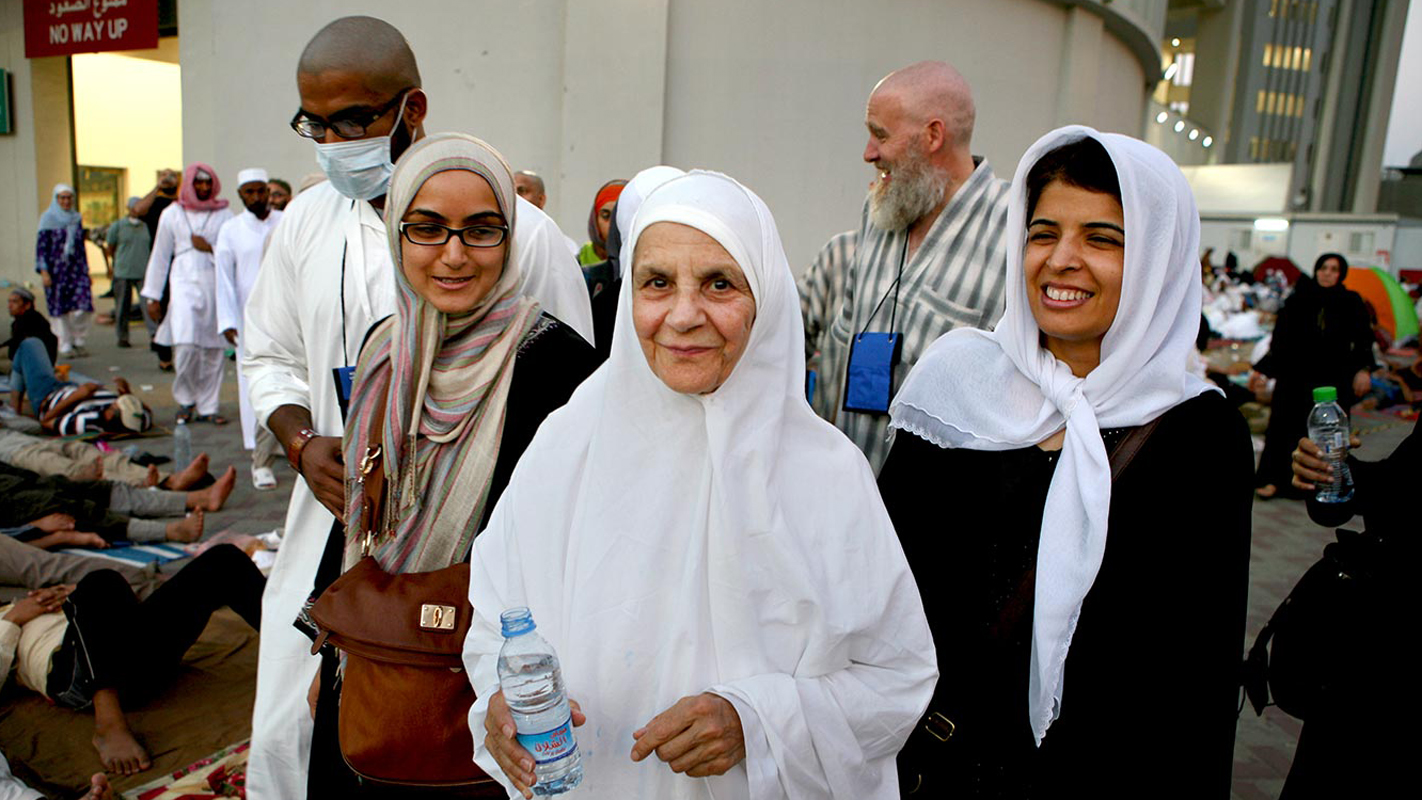
SACRED JOURNEYS WITH BRUCE FEILER Hajj
Join host Bruce Feiler on an unprecedented journey to the world’s most meaningful landscapes and rigorous religious pilgrimages. Feiler and contemporary sojourners trek to sacred sites visited annually by hundreds of millions of pilgrims. Each episode follows a modern-day pilgrim on a private spiritual journey. The series presents a comprehensive picture of the practice of pilgrimage in its varied expressions around the globe, over thousands of years.
Hajj “The Hajj is the iconic pilgrimage on Earth,” says host Bruce Feiler, as millions of pilgrims gather in the valleys outside the city of Mecca in today’s Saudi Arabia to take part in the annual five-day pilgrimage every Muslim hopes to complete at least once. Since non-Muslims aren’t permitted in Mecca, Bruce’s surrogate is Anisa Mehdi, a veteran reporter of the Hajj, with whom Bruce will Skype at regular intervals. Anisa joins a group of Muslim pilgrims from Boston who begin their journey in Medina, the second of Islam’s holy cities.
Sacred Journeys
Host Bruce Feiler embeds with a group of active duty and retired US military, wounded in Afghanistan, Iraq and other American wars, as they travel to the Catholic shrine of Lourdes in Southwest France in search of healing. More than five million pilgrims from around the world visit this shrine to the Virgin Mary every year to drink and bathe in the waters of a spring that Catholics believe has miraculous powers. The wounded warriors from America are joining 30,000 other military and their families from 35 different nations on an International Military Pilgrimage that’s now in its 55th year, starting after the Second World War. While only half the American soldiers are Catholic, all hope that Lourdes can provide spiritual and emotional healing beyond the treatment they’ve already received for their physical wounds and disabilities – especially for invisible wounds of war like PTSD. Some of these wounded warriors come to Lourdes as skeptics, many with faith or at least an open mind. Whether sharing their stories of war and recovery with Bruce Feiler or finding healing in the camaraderie of fellow warriors, the weeklong pilgrimage allows the veterans to open up to others in a place whose primary focus is to ease suffering. It’s healing just as powerful as the waters of the spring uncovered by a young peasant girl named Bernadette during her vision of the Virgin Mary in 1858. Not everyone believes in miracles, but as a young non-Catholic soldier wounded just months earlier in Afghanistan says on his departure from Lourdes: “I don’t know what it is but there’s something special about this place.”
The Island of Shikoku in Japan is the birthplace of the most revered figure in Japanese Buddhism, the monk and teacher Kobo Daishi, who brought a populist form of Buddhism to Japan from China in the 9th Century. For hundreds of years, a 750-mile pilgrimage route has circled this mountainous island, connecting 88 separate temples and shrines that claim connection to the Great Master – Kobo Daishi. Host Bruce Feiler circles the island, following a pilgrim trail that’s taken by hundreds of thousands of Japanese and international pilgrims every year; a Buddhist pilgrimage that welcomes pilgrims of all faiths. While the majority now drive or travel by train or bus – a two-week journey – many still set aside 60 or more days to walk the entire route, especially in the spring when the cherry blossoms are in bloom and pilgrimage season is at its height. Temple priests introduce Bruce to sacred ceremonies that date back thousands of years, revealing how the presence of Kobo Daishi is believed to accompany all who follow in his footsteps. Out on the pilgrim trail, Bruce meets with different American walkers – a hiking group from the Pacific Northwest, a retired soldier from California, and two recently-married doctors from Indiana – to learn why they’ve come to Shikoku and what they are hoping to find.
Sukkot, or the Feast of the Tabernacles, is one of three great festivals in the Jewish calendar when, in ancient times, Jews from across Israel were commanded to come to the Temple in Jerusalem on pilgrimage. But although Jewish pilgrimage lessened in importance after the destruction of the Temple by the Romans in 62CE, Christian pilgrims began coming to Jerusalem and the Holy Land within centuries of Jesus’ death. During the week of Sukkot, host Bruce Feiler travels to Israel with Jewish and Christian pilgrims. For many Christians, the road to Jerusalem begins in the Galilee along the Jesus Trail, a route that follows the path of Jesus’ ministry. For a Jewish pilgrim from Philadelphia, spending Sukkot in Jerusalem not only honors ancient Jewish pilgrimage but also her personal time of decision, whether to remain in America or move to Jerusalem on permanent pilgrimage. In coming to Jerusalem, Bruce returns to his own Jewish roots. Whether walking with Christian pilgrims on the Jesus Trail, celebrating Sukkot with American Jews in Jerusalem or exploring the past with scholars of the three faiths – Judaism, Christianity and Islam – who share Jerusalem, Bruce reveals a land where religious and historical divisions have made it the most contentious place on earth. But as the pilgrims from different faiths converge on the many sacred shrines that coexist within Jerusalem’s ancient walls, Bruce also reveals why Jerusalem has been a center of pilgrimage for so long. In spite of its long and turbulent history, it remains a city of faith for all who worship the One God who is the God of Moses, of Jesus and of Muhammad.
“The Hajj is the iconic pilgrimage on Earth,” says host Bruce Feiler, as millions of pilgrims gather in the valleys outside the city of Mecca in today’s Saudi Arabia to take part in the annual five-day pilgrimage every Muslim hopes to complete at least once. Since non-Muslims aren’t permitted in Mecca, Bruce’s surrogate is Anisa Mehdi, a veteran reporter of the Hajj, with whom Bruce will Skype at regular intervals. Anisa joins a group of Muslim pilgrims from Boston who begin their journey in Medina, the second of Islam’s holy cities. As the pilgrims visit sites in Medina associated with the life of the Prophet Muhammad, Bruce enlists the help of a historian and an eminent American Muslim scholar to explore the origins of the religion and its iconic pilgrimage. In 622CE Muhammad fled his birthplace of Mecca after persecution by its pagan rulers who objected to him preaching a new monotheism. Muhammad and a small group of followers settled in Medina. Within ten years Islam was the dominant religion of Arabia and Muhammad returned to Mecca in triumph to clear idols from the holy sites and teach his followers the different stages of the Hajj pilgrimage. The Boston pilgrims follow Muhammad’s path from Medina to Mecca, beginning their Hajj by circling the Ka’aba, the ancient shrine at the center of Mecca’s Great Mosque. Muslims believe the Ka’aba was first built by Abraham, patriarch of Islam, Judaism and Christianity. Stripping themselves of worldly possessions for the duration of the Hajj, the pilgrims enact the rituals laid out by Muhammad, experiencing exhaustion, injury and elation as they seek forgiveness and inner peace. They leave with a new sense of connection to humanity, and to the one-and-a-half billion people that make up the worldwide community of Muslims.
Every twelve years, tens of millions of men, women and children gather on the flood plain of the Ganges and Yamuna Rivers in Allahabad, India, for the largest gathering of humanity for religious purposes on the planet, and host Bruce Feiler is there. This is the Kumbh Mela, the great Hindu festival where pilgrims come from across India, and around the world, to bathe in the water where two sacred rivers meet. Such mass bathing in the Ganges has been recorded for more than 2500 years and at least 100 million people will attend what Hindu astrologers have declared as the most auspicious Kumbh Mela in 144 years. Host Bruce Feiler travels to the Kumbh with a group of spiritual seekers from across America, first stopping in the Hindu holy city of Varanasi, downstream from Allahabad, to take part in traditional rituals on the Ganges, India’s most sacred river that is worshipped by Hindus as a goddess. Bruce and the pilgrims travel on by bus to the vast Mela tent city built on land that was underwater just months earlier and will be flooded again in just a few months more. Bruce and the American pilgrims settle into camp, surrounded by millions of other pilgrims, holy men, gurus and ash-covered Naga babas, the naked ascetics who are the most visible symbol of the Kumbh Mela. After surviving an out-of-season monsoon that floods much of the Mela camp, Bruce and the American pilgrims meet with some of India’s leading spiritual gurus. They also join millions of fellow pilgrims, Naga babas and sadhu holy men and women who are taking a ‘holy dip’ at the confluence of the Ganges and Yamuna Rivers in a ritual that Hindus believe washes away sins and breaks the endless cycle of reincarnation.
Host Bruce Feiler travels to Nigeria with a group of African American pilgrims who are attending an annual festival in honor of the Yoruba Goddess Osun as a way to reconnect with their cultural and spiritual roots. This indigenous African faith, sometimes called Orisa Devotion, was first carried to the Americas during the Transatlantic Slave Trade where it evolved and spread to become one of the ten largest religions in the world with upwards of 100 million practitioners. In its many forms it’s most widely practised in the Caribbean and Brazil. In the US, after being forced underground during slavery, it is now growing in popularity across the country, especially in African American and Afro-Cuban neighborhoods. In company with pilgrims from Miami, New York and Boston, Bruce Feiler visits the last remaining Yoruba sacred grove in Nigeria, now a UNESCO World Heritage site, where the Osun Festival attracts tens of thousands of pilgrims and visitors from across Africa and around the world. As two young American pilgrims are initiated as priestesses to the goddess Osun, a Miami-based priest reveals that it’s music and dance that brings most African Americans back to a faith where culture, art and spirituality are inextricably mixed. In Nigeria this indigenous African religion is under attack from Evangelical Christianity and fundamentalist Islam. But as the Osun Festival reaches its climax, Bruce sees that practitioners from the Yoruba Diaspora are reinvigorating the faith in its homeland while taking home a new sense of identity as African Americans. As a young priestesses tells Bruce: “There is no power in not knowing who you are, where you come from. Coming here, I’m taking back that power; I’m taking back that identity.”
Cast & Crew
Bruce Feiler
Wayne Derrick
Laurie Donnelly
Sally Thomas
- DOCUMENTARY
Information
© 2014 WGBH
Accessibility
Copyright © 2024 Apple Inc. All rights reserved.
Internet Service Terms Apple TV & Privacy Cookie Policy Support
On PBS’s ‘Sacred Journeys,’ a long walk with God

More than a billion people traveled internationally in 2014, a record number, according to the UN’s World Tourism Organization. Of those, about a third — an estimated 330 million — journeyed for spiritual reasons, making pilgrimages to the world’s religious shrines.
At a time when organized religion is facing greater challenges than ever before, with membership, attendance, and even the number of people self-identifying as “religious” all in decline, reports about the strong state of spiritual tourism have the airline and hospitality industries thanking the gods. But for Bruce Feiler, the best-selling author and PBS personality, it means something much more than just a healthy economy.
Five years in the making, his new six-part PBS series, “Sacred Journeys With Bruce Feiler,” follows religious pilgrims to Lourdes, Jerusalem, the island home of a revered figure in Japanese Buddhism, and other devotional sites. One of Tuesday night’s two episodes, “The Hajj,” accompanies a group of Muslim-Americans from the Boston area as they make the Hajj in the holy city of Mecca. (Earlier episodes of the series, which is coproduced by the WGBH Educational Foundation, are streaming at www.pbs.org/sacredjourneys .)
“For most of human history, our identity was given to us,” Feiler says. “When you were born, you got the religion of your parents, and often their profession. Even your spouse was given to you.
“But over the last 200 years, each of those things has broken down. We can now pick where we want to live, our partner, our gender identity.” Religion, he says, is “late to the game” of self-determination, “but it’s happening now.”
Jack Lindsay, a software designer who studied Christianity at Boston University’s School of Theology before converting to Islam, lives in Worcester with his wife, who is from Bangladesh, and their children. He returned from his Hajj with a visual souvenir: an inadvertent black eye he sustained in the crush of worshipers trying to lay their hands on the Ka’aba, the square structure at the center of Al-Masjid al-Haram, the most sacred mosque in Islam.
Advertisement
Though he has trouble describing it, Lindsay says he felt the profound personal change so many people experience after making their pilgrimage.
“I could say it was peaceful, a great sense of relief,” he says. “You felt your prayers were actually answered, like you had a close relationship with God. It stays with you for a while after you come back.”
For Syed Talha of Framingham, a 32-year-old native of Saudi Arabia who moved to the US as a teenager, agreeing to be available to the cameras while performing his Hajj felt like an opportunity to help foster a greater understanding of his religion in his adopted homeland, at a time when Islamic radicalism tends to dominate the news.
“It was a chance for us as the Muslim community in Boston to show we’re normal people,” he says, noting that “there’s a Starbucks right outside the mosque.”
At the same time, like so many of his fellow pilgrims, Talha made his journey to Mecca for a very personal reason, during a period of transition: He was going through a divorce.
“I kind of wanted to reset my life,” says Talha, who, like Lindsay, works as a software developer. “I wanted to talk to God and come back knowing that whatever happened, it was for the better. No bitter feelings, just moving on. I needed that.”
For the episode filmed in Mecca, broadcast journalist Anisa Mehdi served as Feiler’s proxy; only those of Muslim faith are permitted on the Hajj. As it happened, one of the participants, 48-year-old Tala Khudairi of Wellesley, had already crossed paths with Mehdi several times. Their bond was strengthened as they circled the Ka’aba amid the sea of pilgrims.
“I was kind of plowing through, and I felt she was lifting me up,” recalls Khudairi, who is an associate director for the region’s accreditation agency for higher education. “I was calling out my prayers, telling myself I need to be strong and firm so I don’t fall down.”
But at the morning prayer, the extreme heat got to her. She fainted.
“Physically, I had prepared for it,” she says. “I’d walked on a treadmill for two miles every day.” Required to use a wheelchair to attend later rituals, she was disappointed. Then she realized her circumstances were a larger lesson she could take home from her trip.
It’s about surrender and acceptance, she says. “My expectations — I really need to let go of that. I don’t ultimately have control over my own destiny. I do my bit, but then it’s really up to God.”
Feiler was reluctant at first to follow up his highly rated 2005 miniseries, “Walking the Bible.”
“I wasn’t interested in making a series of Wikipedia entries,” he explains. “Strange people going on strange journeys, where the whole thing would seem ‘other,’ distant.”
Then he was struck by how often we hear of ordinary people casting their lives, and their search for meaning, as their own personal “journey.”
“In a world where more and more things are virtual and ephemeral, a pilgrimage is a chance to experience something real,” says Feiler. “It will change how you live your life. That’s the kind of thing I’m interested in.”
Syed Talha says that he has felt different since returning from the Hajj, “but I also didn’t want to come back as a different person. I’ve seen people change, become unapproachable, with their new connection with God.
“The way I live my life and understand Islam, every aspect of my life — going to work, buying new clothes, meeting with my parents or my friends — every aspect of that has a connection to God,” he says, effectively summing up the cumulative message of “Sacred Journeys.”
“If I smile at somebody, that in itself pleases God.”
James Sullivan can be reached at [email protected] . Follow him on Twitter @sullivanjames .
- Cast & crew

Episode list
Sacred journeys with bruce feiler.

S1.E1 ∙ Lourdes

S1.E2 ∙ Shikoku

S1.E3 ∙ Jerusalem

S1.E4 ∙ The Hajj

S1.E5 ∙ Kumbh Mela

S1.E6 ∙ Osun-Osogbo
Contribute to this page.

- See more gaps
- Learn more about contributing
More from this title
More to explore.

Recently viewed

IMAGES
COMMENTS
Funding for Sacred Journeys with Bruce Feiler provided by Cancer Treatment Centers of America, Hans and Margret Rey/Curious George Fund, The Pew Charitable Trusts, The Arthur Vining Davis Foundations, the Corporation for Public Broadcasting, and by public television viewers. ... FEILER: The Hajj, like many pilgrimages, is a story of layers ...
The Hajj: Directed by Anisa Mehdi. With Bruce Feiler. "The Hajj is the iconic pilgrimage on Earth," says host Bruce Feiler, as millions of pilgrims gather in the valleys outside the city of Mecca in today's Saudi Arabia to take part in the annual five-day pilgrimage every Muslim hopes to complete at least once. Since non-Muslims aren't permitted in Mecca, Bruce's surrogate is Anisa Mehdi, a ...
"The Hajj" airs Tuesday, December 23 at 9 p.m. - "The Hajj is the iconic pilgrimage on Earth," says host Bruce Feiler, as millions of pilgrims gather in the valleys outside the city of Mecca ...
Hajj. Available on PBS Video, iTunes. S1 E4: "The Hajj is the iconic pilgrimage on Earth," says host Bruce Feiler, as millions of pilgrims gather in the valleys outside the city of Mecca in today's Saudi Arabia to take part in the annual five-day pilgrimage every Muslim hopes to complete at least once. Since non-Muslims aren't permitted ...
Sacred Journeys with Bruce Feiler. Watch Schedule About More Watch Watch Schedule About More Watch ... The Hajj Premieres Tuesday, December 23 at 9/8C Watch Your Shows Many Ways ...
Travel in the footsteps of the prophet Muhammad to the annual gathering of Muslims in Mecca. This episode of Sacred Journeys with Bruce Feiler premieres December 23 at 9/8C on PBS (check local ...
In this landmark series, New York Times best-selling author Bruce Feiler travels with American pilgrims on six historic pilgrimages. They set out from the ordinary and seek the extraordinary. - In Lourdes, France, bathe in sacred waters with wounded soldiers from around the world in a moving search for healing and reconciliation. - In ...
Join host Bruce Feiler on an unprecedented journey to the world's most meaningful landscapes and rigorous religious pilgrimages. Feiler and contemporary sojo...
One of the five pillars of Islam is that each believer is called, at least once in their lives, to make the Hajj, the annual pilgrimage that starts and ends in the holy city of Mecca located in today's Saudi Arabia. ... This episode of Sacred Journeys with Bruce Feiler premieres December 30 at 9/8C on PBS (check local listings). See more from ...
Join host Bruce Feiler on an unprecedented journey to the world's most meaningful landscapes and rigorous religious pilgrimages. Feiler and contemporary sojourners trek to sacred sites visited annually by hundreds of millions of pilgrims. Each episode follows a modern-day pilgrim on a private spiritual journey. The series presents a comprehensive picture of the practice […]
"The Hajj is the iconic pilgrimage on Earth," says host Bruce Feiler, as millions of pilgrims gather in the valleys outside the city of Mecca in today's Saudi Arabia to take part in the annual five-day pilgrimage every Muslim hopes to complete at least once.
Sacred Journeys with Bruce Feiler. View More Episodes ... Feiler's surrogate is Anisa Mehdi, a veteran reporter of the Hajj, who joins a group of Muslim pilgrims from Boston who begin their journey in Medina, the second of Islam's holy cities. The Boston pilgrims follow Muhammad's path, beginning their Hajj by circling the Ka'aba, the ancient ...
One of Tuesday night's two episodes of "Sacred Journeys With Bruce Feiler" on WGBH 2 accompanies a group of Muslim-Americans from the Boston area as they make the Hajj in the holy city of Mecca.
ABOUT THE PROGRAM Sacred Journeys. Join best-selling author/adventurer Bruce Feiler on an epic journey as he travels with contemporary pilgrims on six historic pilgrimages around the world and ...
S1.E1 ∙ Lourdes. In 1858, in an unassuming town in the southwest of France, a 14-year-old peasant girl named Bernadette Soubirous claimed she had 18 encounters with the Virgin Mary. Since then, Lourdes has become one of the holiest Catholic pilgrimage sites in the world, visited annually by more than five million people who come in search of ...
Season 1. Ep 4. The Hajj. TV-PG. December 24, 2014. 54 min. In Sacred Journeys with Bruce Feiler season 1 episode 4, viewers are taken on a journey to the annual Islamic pilgrimage known as the Hajj. Bruce Feiler follows a group of diverse pilgrims from around the world as they embark on the rigorous journey to Mecca, Saudi Arabia.